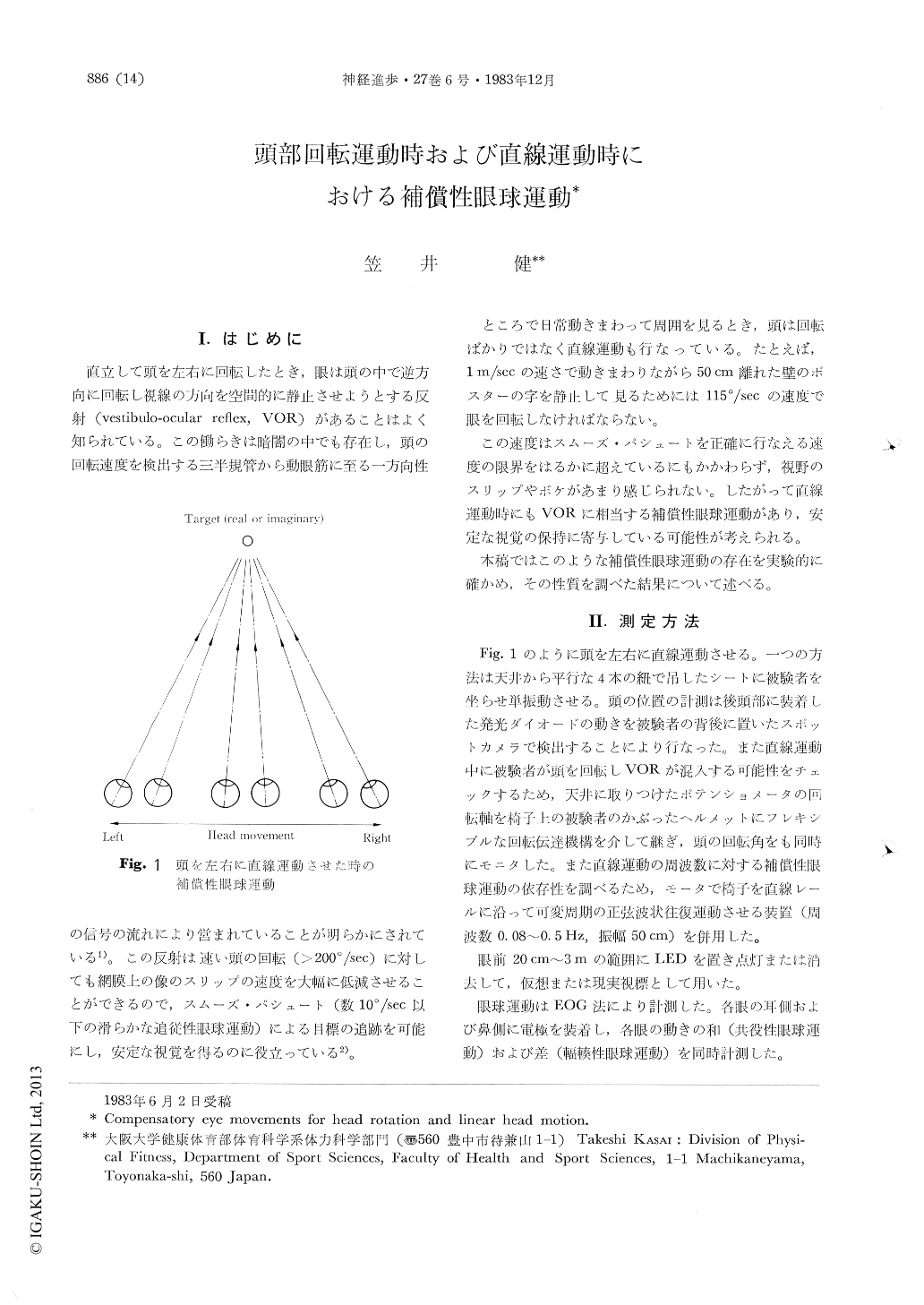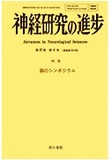Japanese
English
- 有料閲覧
- Abstract 文献概要
- 1ページ目 Look Inside
I.はじめに
直立して頭を左右に回転したとき,眼は頭の中で逆方向に回転し視線の方向を空間的に静止させようとする反射(vestibulo-ocular reflex,VOR)があることはよく知られている。この働らきは暗闇の中でも存在し,頭の回転速度を検出する三半規管から動眼筋に至る一方向性の信号の流れにより営まれていることが明らかにされている1)。この反射は速い頭の回転(>200°/sec)に対しても網膜上の像のスリップの速度を大幅に低減させることができるので,スムーズ・パシュート(数10°/sec以下の滑らかな追従性眼球運動)による目標の追跡を可能にし,安定な視覚を得るのに役立っている2)。
ところで日常動きまわって周囲を見るとき,頭は回転ばかりではなく直線運動も行なっている。たとえば,1m/secの速さで動きまわりながら50cm離れた壁のポスターの字を静止して見るためには115°/secの速度で眼を回転しなければならない。
It has been well known that vestibulo-ocular reflex (VOR) reduces slip velocity of retinal image of surrounding world, while head is rotating so that smooth pursuit system can stabilize the retinal image using visual feedback. On the other hand, it has not been clear whether compensatory eye movement exists to stabilize image or reduce it's velocity while head is translating.
The author investigated eye movements while subject's head is reciprocally translating left and right on a pendulum chair or on a motor driven chair along a linear rail with various frequencies.

Copyright © 1983, Igaku-Shoin Ltd. All rights reserved.


